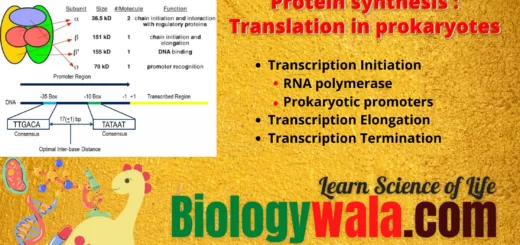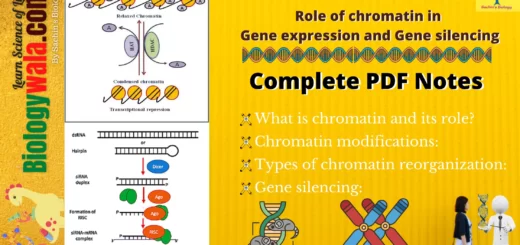[PDF] Systematic Position of Hydatellaceae NOTES
Systematic Position of Hydatellaceae:
In 1976, Hamann established the family Hydatellaceae, initially placing the two genera, Hydatella and Trithuria, within Centrolepidaceae in the order Poales. However, Hamann observed significant differences between Centrolepidaceae and Trithuria/Hydatella:
Centrolepidaceae:
- Anthers: 2-sporangiate
- Stomata: Paracytic
- Pollen: Monoporate
- Ovule: Orthotropous
- Endosperm Development: Nuclear
- Seeds: With endosperm
Trithuria/Hydatella: What is hydatellaceae family
- Anthers: 4-sporangiate
- Stomata: Anomocytic
- Pollen: Monocolpate
- Ovule: Anatropous
- Endosperm Development: Cellular
- Seeds: With perisperm
These observed differences in anther structure, stomatal type, pollen characteristics, ovule morphology, endosperm development, and seed composition between Centrolepidaceae and Trithuria/Hydatella led to the establishment of the distinct family Hydatellaceae. These taxonomic distinctions highlight the importance of careful observation and comparison in elucidating the systematic positions of plant families within the broader classification framework.
Trithuria konkanensis
![[PDF] Systematic Position of Hydatellaceae NOTES 1 [PDF] Systematic Position of Hydatellaceae NOTES](https://biologywala.com/wp-content/uploads/2023/12/PDF-Systematic-Position-of-Hydatellaceae-NOTES.webp)
![[PDF] Systematic Position of Hydatellaceae NOTES 2 [PDF] Systematic Position of Hydatellaceae NOTES](https://biologywala.com/wp-content/uploads/2023/12/2-PDF-Systematic-Position-of-Hydatellaceae-NOTES.webp)
![[PDF] Systematic Position of Hydatellaceae NOTES 3 [PDF] Systematic Position of Hydatellaceae NOTES](https://biologywala.com/wp-content/uploads/2023/12/3-PDF-Systematic-Position-of-Hydatellaceae-NOTES.webp)
Molecular Phylogenetic Analyses of Hydatellaceae: [PDF] Systematic Position of Hydatellaceae NOTES
![[PDF] Systematic Position of Hydatellaceae NOTES 4 [PDF] Systematic Position of Hydatellaceae NOTES](https://biologywala.com/wp-content/uploads/2023/12/4.-PDF-Systematic-Position-of-Hydatellaceae-NOTES.webp)
Recent molecular phylogenetic analyses have utilized multiple plastid genes and associated noncoding regions from the two genera within Hydatellaceae. These analyses have brought attention to this previously overlooked plant family and have revealed it to be the sister group of Nymphaeales.
This unexpected relationship is further supported by evidence derived from the nuclear gene phytochrome C (PHYC). Additionally, numerous morphological characters contribute to the confirmation of this surprising result.
The molecular data, encompassing plastid genes and noncoding regions, alongside nuclear gene PHYC, collectively establish a robust phylogenetic framework that places Hydatellaceae as the sister group to Nymphaeales. The integration of morphological characters further reinforces this novel relationship, shedding light on the evolutionary connections within the broader context of plant classification.
![[PDF] Systematic Position of Hydatellaceae NOTES 5 [PDF] Systematic Position of Hydatellaceae NOTES](https://biologywala.com/wp-content/uploads/2023/12/5.-PDF-Systematic-Position-of-Hydatellaceae-NOTES.webp)
Protein Coding Genes in Plastid Functions:
A variety of protein coding genes play crucial roles in diverse cellular functions within the plastid. These genes contribute to essential processes such as photosynthesis, chlororespiration, and translation. In the multigene plastid matrix, several key protein coding genes are involved in various functions:
- Photosynthesis:
- atpB: Involved in ATP synthesis.
- psb (photosystem II) genes: Essential components of the photosystem II complex.
- rbcL: Encodes the large subunit of the enzyme RuBisCO, crucial for carbon fixation in photosynthesis.
- Chlororespiration:
- ndhF, ndhB: Genes associated with chlororespiration processes.
- Translation:
- rpl2, rps7, rps12: Genes contributing to the translation process within plastids.
In addition to these protein coding genes, the multigene plastid matrix incorporates several conservative noncoding regions. These include introns within ndhB, rpl2, and 3’-rps12. Furthermore, intergenic spacers between these genes and between ndhB and trnL(caa) are also considered in the analysis.
![[PDF] Systematic Position of Hydatellaceae NOTES 6 [PDF] Systematic Position of Hydatellaceae NOTES](https://biologywala.com/wp-content/uploads/2023/12/7.-PDF-Systematic-Position-of-Hydatellaceae-NOTES.webp)
Within the genus Hydatella, the female gametophyte exhibits distinctive features. It is characterized by being four-celled and four-nucleate. This structure stands out as a notable trait in the reproductive development of Hydatella.
One intriguing aspect is the ability of the female gametophyte to generate a diploid endosperm. This trait aligns with characteristics observed in many early divergent angiosperm lineages. The diploid endosperm produced by the female gametophyte represents a shared feature with certain ancestral angiosperms, providing insights into the reproductive mechanisms within this particular lineage.
Understanding the intricacies of female gametophyte development in Hydatella contributes to the broader knowledge of angiosperm evolution and reproductive strategies, especially among early divergent lineages.
![[PDF] Systematic Position of Hydatellaceae NOTES 7 [PDF] Systematic Position of Hydatellaceae NOTES](https://biologywala.com/wp-content/uploads/2023/12/9.-PDF-Systematic-Position-of-Hydatellaceae-NOTES.webp)
![[PDF] Systematic Position of Hydatellaceae NOTES 8 [PDF] Systematic Position of Hydatellaceae NOTES](https://biologywala.com/wp-content/uploads/2023/12/6.-PDF-Systematic-Position-of-Hydatellaceae-NOTES.webp)
Maternal Seed Provisioning in Hydatella: A Unique Reproductive Strategy
- Endosperm Development in Nymphaeales: In line with other members of the Nymphaeales, Hydatella displays minimal development of endosperm within its seeds.
- Predominance of Perisperm: Perisperm is the primary tissue for nourishing the embryo in Hydatella.
- Unique Maternal Provisioning Strategy: Hydatella stands out with its distinctive maternal seed provisioning strategy, which is atypical among flowering plants but shares similarities with gymnosperms.
- Comparison with Angiosperms and Gymnosperms: In contrast to angiosperms, where maternal commitment of resources for embryo nourishment occurs post-fertilization, Hydatella, akin to gymnosperms, employs a pre-fertilization allocation strategy.
- Adaptive Mechanism: The pre-fertilization nutrient allocation observed in Hydatella is regarded as an adaptive mechanism, allowing efficient resource allocation to successfully fertilized seeds.
- Evolutionary Significance: This exceptional pre-fertilization maternal provisioning in Hydatella may be a unique feature of Hydatellaceae. However, considering the family’s newly discovered phylogenetic position, it potentially represents a transitional condition associated with the origin of flowering plants from gymnospermous ancestors.
Must read For Taxonomy Enthusiasts:
Role of Anatomy in Taxonomy
[Download] A Text Book Of Practical Botany 2 | Bendre Kumar Practical Botany PDF Book
[Download] Plant Systematics by Gurcharan Singh PDF Book 3rd edition
BSI Research Associate Fellowship Programme 2023: A Comprehensive Guide
Join SACHIN’S BIOLOGY on Instagram or Facebook to receive timely updates and important notes about exams directly on your mobile device. Connect with Mr. Sachin Chavan, the founder of Sachin’s Biology and author of biologywala.com, who holds an M.Sc., NET JRF (AIR 21), and GATE qualifications. With SACHIN’S BIOLOGY, you can have a direct conversation with a knowledgeable and experienced.


